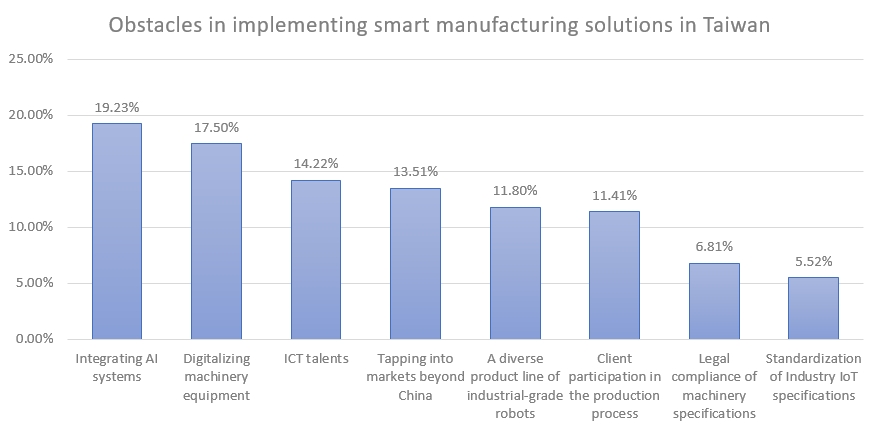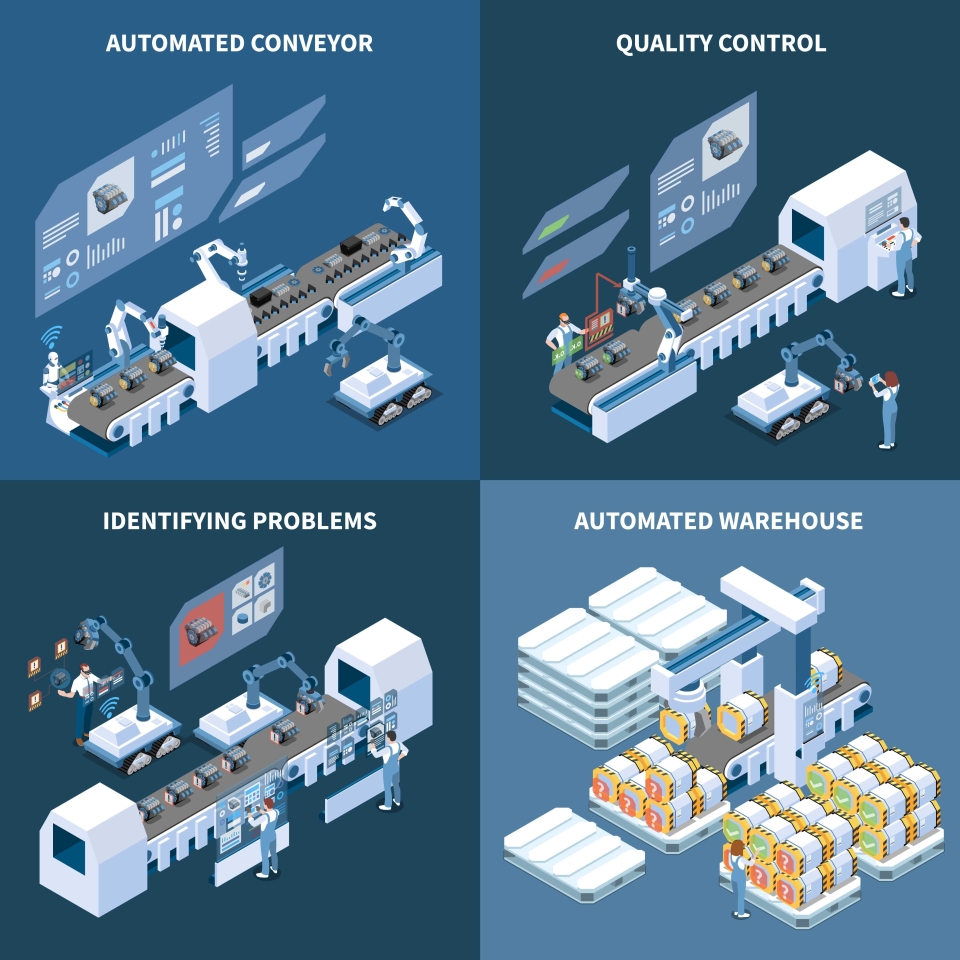What's stopping Taiwan's manufacturing industry from becoming smarter?
2022/02/16 | By CENS
Originally published in the Economic Daily News by ITRI Aldea AI Collaboration Platform in Mandarin Chinese
Translation by Stephanie Chao
Editor's Notes: To create hand tools, one must require the equipment to do so. With digital transformation and Industry 4.0 capabilities becoming more and more prevalent across different industries, the incorporation of smart machinery has become a crucial factor in leading the hand tools industry into a different era. In this translation of a Mandarin-language article originally published in the Economic Daily News, we discuss the on-going trends in the smart machinery development, and offer more insight on smart applications, with the aim to bridge different industries together.
Internal Stressors: Over-reliance on labor work amid declining birthrates negatively impact industry development
The export-oriented manufacturing industry is still primarily a labor-intensive sector, especially in machinery, metal processing, textile, electronic product production lines, costing around 50% to 70% of labor, 30% to 40% of productive time, and 65% of costs. On the other hand, labor-intensive areas often report higher error rates and reduced efficiency.
While Taiwan's domestic manufacturing industry is built on small and medium-sized enterprises (SMEs), more often than not, these companies lack the capital and knowledge to implement digital technologies to streamline the production chain better. In addition, declining birth rates and an aging population have made traditional production models challenging to sustain, hire and retain talent, further resulting in lowered production quality and difficulties to stay in business.
External Stressors: Domestic tech still playing catch-up with mature global solutions
Global big-name companies embracing and rolling out smart solutions are already a trend among examples like Microsoft, Rockwell Automation, Siemens, Mitsubishi Motors, Fanuc, and Amazon. The relatively fast adoption of smart industry IoT solutions is to accelerate achieving smart manufacturing needs, goals like accuracy, worker and labor efficiency, and fast production and delivery. These solutions can pivot the manufacturing sector to success; however, many suppliers still advocate for labor-intensive solutions over technology-proven ones in Taiwan.
If Taiwanese industries wish to improve their business service structure and competitiveness, certain aspects of the production process must be digitalized and automated. Failure to integrate and internalize multiple solutions into one package will result in companies' over-reliance on external, general solutions, hampering competitiveness growth and missing out on opportunities to eventually offer turnkey solutions.
What is Smart Manufacturing?
Smart manufacturing is derived from precision machinery, having combined varied intelligent technologies, such as AI (A), IoT Big Data (B), cloud computing (C), robots, and high-speed connection. An integrated solution helps companies tackle the demand for smart devices and systems. Therefore, smart manufacturing is often touted as the primary tool to bolster a modern factory's competitiveness in the overall environment, production applications by enhancing technical levels or lowering production costs.
According to a survey conducted by the ITRI Industrial Economics and Knowledge Center, the top surveyed reasons behind Taiwanese companies' difficulties in implementing smart manufacturing are:

Integrating AI systems, 19.23%
Digitalizing machinery equipment, 17.50%
ICT talents, 14.22%
Tapping into markets beyond China, 13.51%
A diverse product line of industrial-grade robots, 11.80%
Client participation in the production process, 11.4%
Legal compliance of machinery specifications, 6.81%
Standardization of Industry IoT specifications, 5.52%
The top three issues perplexing companies are integrating AI systems, digitalizing machinery equipment, and acquiring ICT talent. In other words, Taiwan's smart manufacturing industry profoundly lacks employees with technological skillsets for understanding integrating manufacturing process know-how with AI, CAD/CAM data integration allowing for data sensory extraction and data visualization. The sector needs to cultivate talents with ICT backgrounds in internet connections, algorithms, embedded systems, and cloud computing to fix this talent gap.

Applications of Smart Manufacturing
Smart manufacturing is often used to predict demand, raw material prices, production process optimization, quality prediction, scheduling optimization, automated optical inspection, inventory management, transportation optimization, all with case studies and much effect.
Future Market Trends
1. Expanding 5G Implementation
The three inherent characteristics of 5G technology (URLLC, mMTC, and eMBB) are highly touted as they offer safer and faster, reliable network speeds and accelerate the digital transition of traditional factories into intelligent ones. This level of technology incorporation will require cross-discipline work from telecommunication suppliers, system integrators, and network suppliers to develop peripherals in the supply chain and ecosystem. Future applications of 5G and AI interactive situations will occur within a second, connecting over a million edge devices within a square kilometer of space and creating the best-optimized decision.
2. Implementing Explainable AI
When implementing AI, connecting the human and machine aspects is often discussed in the context that AI results must persuade humans in an explainable way. The AI's optimization of manufacturing processes and essential features can often go against the engineers' long-standing perception, especially relying on industry know-how for years. Therefore, with manufacturing costs on the expensive side, AI results must be explainable to the users and clearly determine whether the smart manufacturing solutions will succeed.
3. Federated Learning Models
When training AI, traditional methods of compiling data sets into a focused training manner are difficult to deploy, as factors like privacy, local regulations, geography, and industry competition come into play. Therefore, module sharing has replaced data sharing to overcome these factors. Furthermore, for domestic smart manufacturing solutions, suppliers can consider implementing general AI learning specifications, and on the other hand, consider relying on SME-oriented industry hubs for product differentiation.
4. Security Protection
Taiwanese manufacturers' most common security threats are ransomware, malware, and phishing. Future enterprise security methods will integrate IT and OT structures, which will include OT into security measures, and create a generalized solution to ease the challenges of the digital transition.

